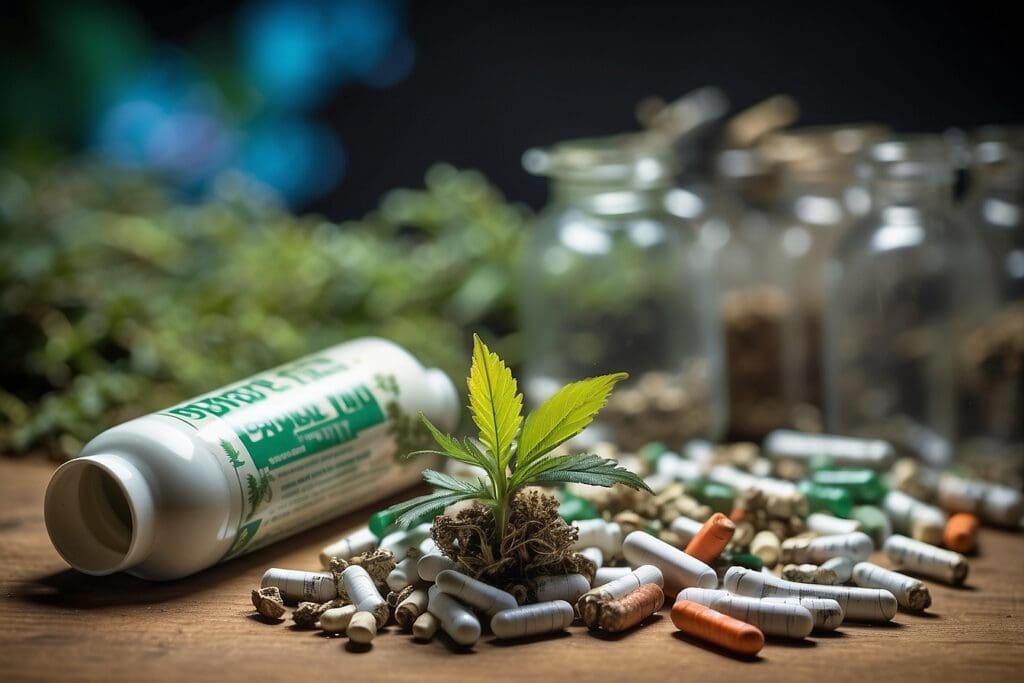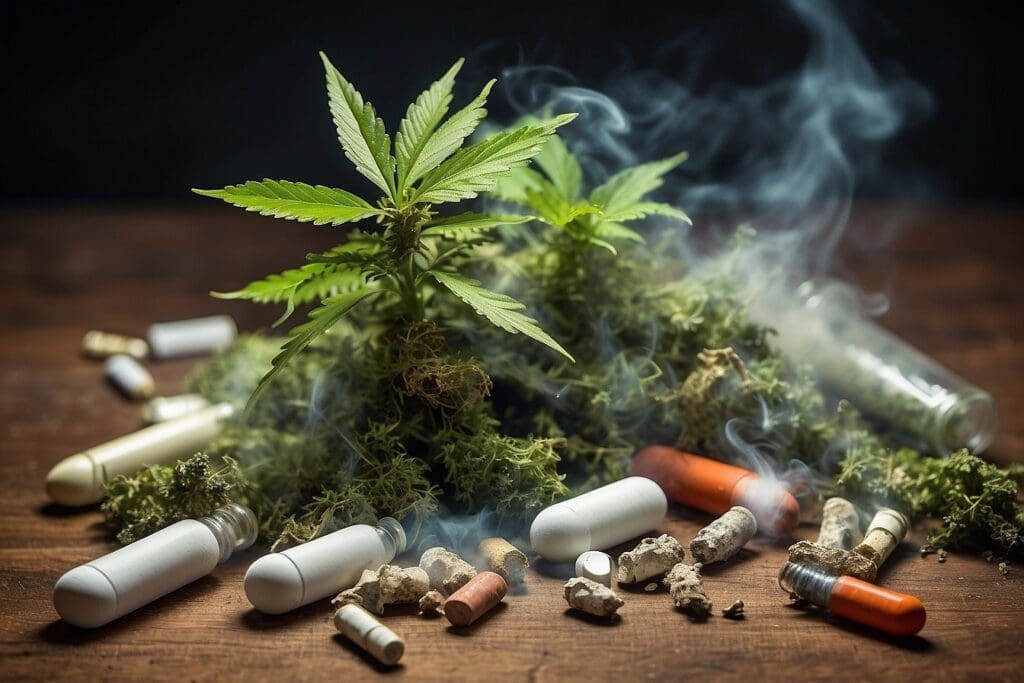Illegal drugs are a well-known menace to society. The social impacts and the effects that they have on the body are widely known. However, when thinking about the illegal drug industry, the environmental impact of producing these drugs is often overlooked. The most commonly abused drugs—marijuana, methamphetamine, cocaine, and heroin—also pose some of the biggest threats to the natural world. Cultivating these drugs contributes to deforestation, chemical pollution, water and soil pollution, erosion, excess greenhouse gas emissions, and also poses a threat to human health and wildlife. Because of the overwhelming negative impact the illegal drug industry has on the environment, below are just some highlights from the biggest offenders.
Cocaine

Cocaine is an extremely addictive stimulant, derived from the coca plant, which directly affects the brain. It is one of the oldest known drugs. According to the U.S. Drug Enforcement Administration, “The pure chemical, cocaine hydrochloride, has been an abused substance for more than 100 years, and coca leaves, the source of cocaine, have been ingested for thousands of years.”1 Its long history of abuse has created a lasting burden on the environment. The most visible environmentally destructive effect of coca cultivation is deforestation—most notably in precious areas of rainforest in Peru, Colombia, and Bolivia. Deforestation leads to a reduction in natural habitat, a reduction in bio-diversity, soil erosion, and adds air pollution because the fields are slashed and burned to clear space for coca crop. Another factor is pesticide pollution. The pesticides used by the growers pollute the soil, groundwater, and air.
After growing the coca leaves, they then need to be processed into cocaine. The processing of coca leaves into coca paste and cocaine has its own environmentally damaging effects. U.S. State Department studies indicate that “10 million liters of sulfuric acid, 16 million liters of ethyl ether, 8 million liters of acetone, and from 40-770 million liters of kerosene” are poured directly into the ground by cocaine processors working in the Andean region, mainly Colombia, yearly.2 Sadly, the chemicals discharged from jungle drug laboratories, combined with the agricultural imbalance of coca growing fields, endanger 210 mammal species, 600 bird species, 170 reptile species, 100 amphibian species and 600 fish species in the Amazon and Orinoco River systems alone.3
Heroin
Heroin, like cocaine, is an extremely addictive drug. It is processed from morphine, a naturally occurring substance extracted from the seedpod of certain varieties of poppy plants. Because it is derived from a plant, it has many of the same environmental impacts as cocaine—although most of the poppy fields are found in Burma as opposed to South America. Similarly, the increased deforestation has resulted in soil erosion, wildlife habitat destruction, and flooding in southwest China. Each hectare of a productive opium field requires the clearing of approximately 2 ½ hectares of forest. Then, about 120 to 230 tons of soil per hectare is lost to erosion.4 In 1990, the United Nations estimated that 1,235,000 acres of tree cover were disappearing every year in Burma due to clearcutting practices. The World Watch Institute estimates forest cutting in Burma at over 2 million acres per year.5 For more on clearcutting, check out: http://www.wordpress-837916-4114959.cloudwaysapps.com/GreeniacsArticles/Clearcutting.html.
Processing opium into heroin has, arguably, more damaging effects than growing poppies. Numerous drug laboratories have been established on the Burma border in order to mix chemicals. The dumping of chemicals in rivers has contributed to environmental pollution problems spread from Burma to China and other Indochina countries.6 Although most of this growing and processing of poppies into heroin takes place in Southeast Asia, the same effect are also being felt where the plants are grown in South America.
Marijuana
Marijuana is the most widely abused drug in the United States, derived from the plant Cannabis sativa. Like its friends, cocaine and heroin, marijuana is a plant and requires a good amount of land to grow and fulfill its consumption demand. When grown outdoors, marijuana plantations are responsible for sizable plots of deforestation, erosion, and pollution. For every eleven and a half plants, one and a half pounds of pesticides and fertilizers are used. In some cases, rat poisons are also spread around the plant to prevent pests from eating them.7 When grown indoors, huge amounts of energy are used for lighting, watering, and maintaining the ideal temperature for the plants to flourish.
Due to the tightening of the United States border with Mexico and Canada, many of the marijuana farms have moved to remote forests in the U.S., specifically in U.S. National parks. As a result, over 2,500,000 marijuana plants have been found and destroyed in National Forests in the United States since 1997. These marijuana farms have been planted in protected areas, often destroying the surrounding areas by the careless use of herbicides and pesticides.8 The growers dam up creeks to siphon water to their crop supplies and leave unnecessary garbage behind after a harvest. In the past three and a half years, 18,465 pounds of garbage and hazardous waste have been removed from parks. This waste includes 445 small propane canisters, empty and partially empty packaging from 9.5 gallons of liquid insecticides and 12,900 pounds fertilizer, and 22.7 miles of irrigation piping.9
Methamphetamine
According to the DEA, “methamphetamine is second only to alcohol and marijuana as the drug used most frequently in many Western and Midwestern states.”10 It is highly addictive with potent central nervous system stimulant properties. Meth is made with a variety of toxic chemicals, including starting fluid (ether), paint thinner, Freon, acetone, anhydrous ammonia, iodine crystals, red phosphorous, brake cleaner (toluene), drain cleaner (sodium hydroxide), battery acid (sulfuric acid), reactive metals (sodium or lithium), or cold tablets containing pseudoephedrine. The harmful effects that methamphetamine has on the environment are astounding. For every pound of methamphetamine produced, between five and six pounds of highly toxic waste is generated. Most of this waste is dumped in household drains that eventually lead to soil and groundwater. Illicit dumping has been known to harm human, plant and wildlife and persist in soil and groundwater for years. Over 26,000 acres of Tahoma State Forest were closed down because of meth pollution.11 Clean-up costs are exorbitant because solvent-contaminated soil usually must be incinerated.
Meth labs pose another series of threats to the environment. Meth lab clean up is extremely resource-intensive and beyond the capability of most law enforcement offices. The average cost of a cleanup is about $5,000 but some cost $150,000.13 Fumes in the walls and the heating ducts can cause cancer, short and long-term brain damage, problems of the immune system and respiratory illness and children living in former meth labs have been known to test positive for the drug. Some states have strict meth clean-up laws and most realtors must inform potential house buyers if their home was formerly a meth lab.13 Many homefires have been blamed on the “blowing-up” of mini-meth labs conducted by inexperienced or substance-influenced individuals trying to make meth at home.
So, putting aside the standard opposition and condemnation of illegal drug use, isn’t the effect on Mother Earth and all of her inhabitants enough to mobilize people around the world to really work together in the war on drugs?



